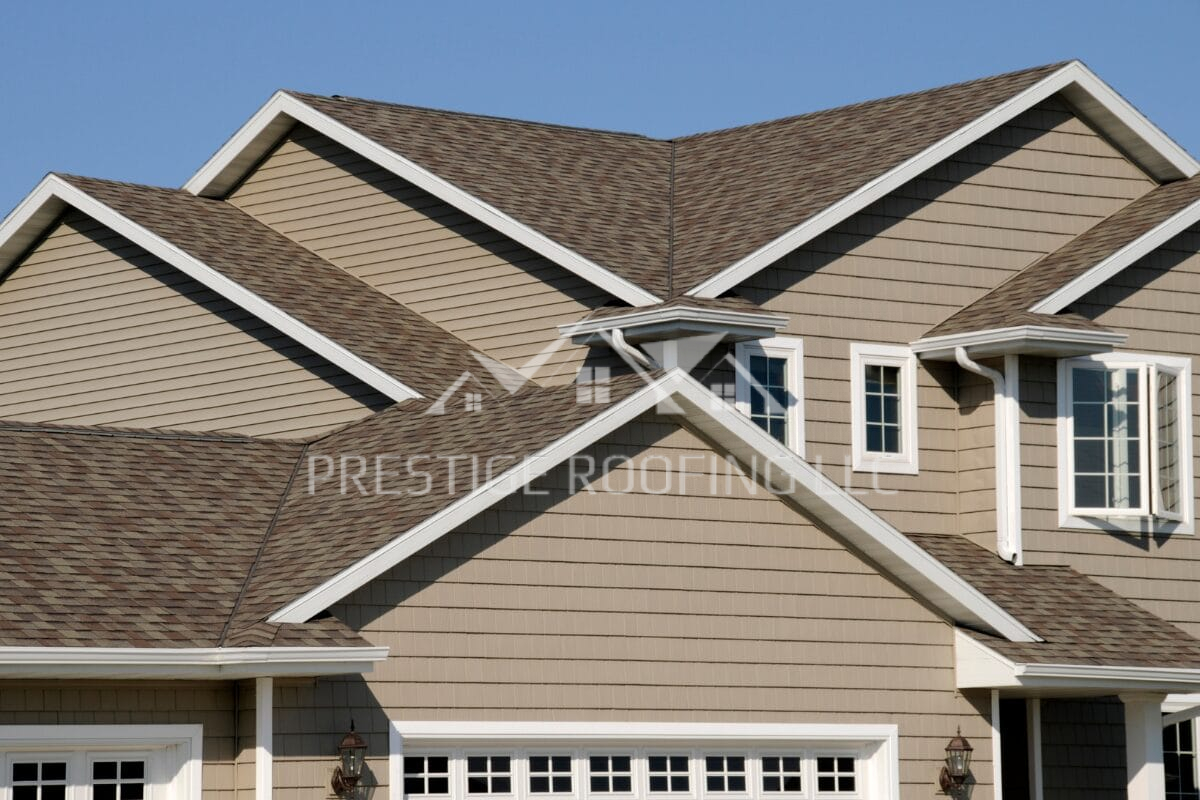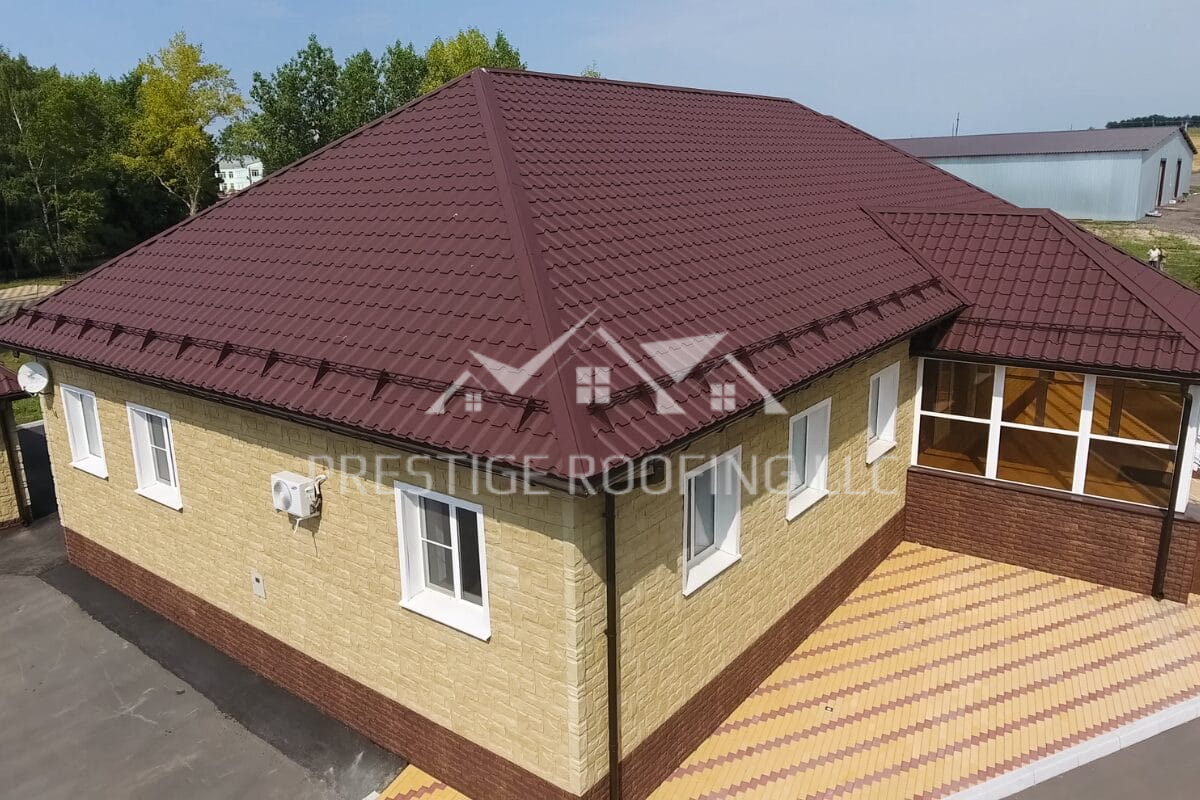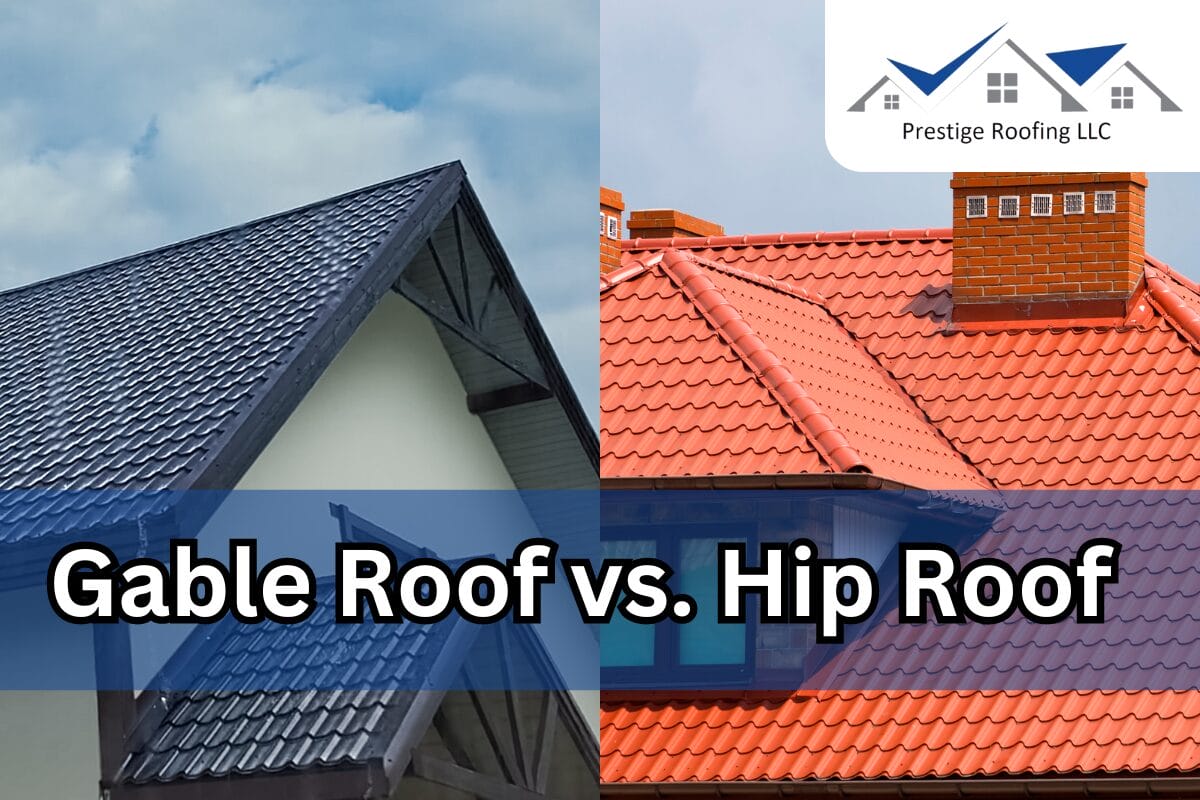Gable and hip roofs are the two roofing systems most predominantly installed in the United States. At first glance, they might look to share the same features, but there are many differences between them. So, if you are confused about whether to choose a gable roof or a hip roof, you’ll want to consider a few factors that may impact your choice. In this blog post, we discuss gable roofs vs. hip roofs in order to help homeowners like you make an informed decision. After reading this detailed guide, you will be able to make a choice that suits your budget and your roofing requirements.
Related: 5 Signs Your Roof Needs To Be Replaced
What Is A Gable Roof?
A gable roof is the classic triangular roof that reminds you of a child drawing a house. It has two slanted sides that come together to form the ridge at the top, creating a triangular shape on each end of the home called gables. This traditional roof style is incredibly simple in design yet also iconic and recognizable. The gable roof is the quintessential roof that’s easy to spot driving through neighborhoods. But its simple looks aren’t the only characteristic that makes gable roofs so popular. There are many variations you choose from in order to customize your home to your tastes and needs.
Types of Gable Roofs
Here are some of the key variations between different types of gable roofs:
1. Simple Gable Roof
This is the most basic and classic gable roof style. It features two sloping roof sections on each side of the ridge that come together at the ends to form triangular gable shapes.
2. Front Gable Roof
A front gable roof has one gable end that faces the front of the home, creating a dramatic entrance. This style is commonly seen on Colonial, Gothic Revival, and Craftsman-style houses.
3. Side Gable Roof
As opposed to front-facing gables, a side gable roof has triangular gable ends on the left and right sides of the home with the roof’s ridge running perpendicular to the front of the house.
4. Crossed Gable Roof
This style combines two simple gable roof sections that intersect perpendicularly to form a cross shape where the gables meet. It adds architectural interest and complexity.
5. Dutch Gable Roof
A Dutch gable (sometimes called a gablet roof) has a small horizontal section added at the top of the triangular gable, creating a curved eave at the gable peak.

What Is A Hip Roof?
A hip roof looks quite different from a gable roof. Rather than the triangular shape, a hip roof has sloping sides on all four sides of the roof that come together at the top ridge. It almost resembles a pyramid in its appearance. This gives hip roofs a sleek, tailored look compared to the classic gable shape. These roofs are also more resilient against high winds and adverse weather conditions. Therefore, they are considered the first option for homeowners in coastal, wind-prone areas. Like gable roofs, hip roofs have many variations, each offering unique advantages to homeowners.
Types of Hip Roofs
Here are the variations of hip roofs in more detail:
1. Simple Hip Roof
The classic hip roof design is the most basic variation. It features four equal sides that slope downwards at the same pitch or angle, all meeting at the top ridge point. This gives the roof a nice, clean, pyramid-like shape.
2. Cross Hip Roof
A cross-hip roof combines hip roof sections with gable roof sections. It generally has a simple hip roof running perpendicular to two sloping gable sections on each end, giving it a more complex and visually interesting design.
3. Half-Hip Roof
As the name implies, a half-hip roof is essentially half-hip and half-gable. It has two sloping roof sections that meet at a ridge to form gable ends, while the other two sides slope inward to create hipped sections.
4. Hip And Valley Roof
The meeting point of hips and valleys in this style of roofing system is an excellent example of a functional and aesthetically pleasing roof. This design feature not only creates visual interest in the roof but also efficiently drains rainwater and snow. The beauty of this architectural style lies in the seamless integration of form and function.
5. Pyramid Hip Roof
Its symmetrical design offers aesthetic appeal and structural stability, making it a popular choice for various buildings. With its clean lines and timeless elegance, the pyramid hip roof offers both functionality and aesthetic elegance.
The Advantages of Gable Roofs vs. Hip Roofs
In this section, we will shed light on the pros of a gable roof vs. a hip roof. Paying attention to these details can help you make a final decision.
Pros of Gable Roofs:
- Gable roofs are simpler and cheaper to build than hip roofs, as there are fewer angles and less surface area involved in the construction process. This makes them an affordable option.
- The triangular shape creates usable attic space for storage or even an extra room if you’re feeling ambitious and want to finish the attic.
- With just two slanted sides meeting at the top ridge, gable roofs allow rain and snow to easily run off the roof and prevent it from accumulating, helping to prevent any potential leaks or water damage over time.
Pros of Hip Roofs:
With no flat surfaces or gable ends, hip roofs are much stronger and can better withstand high winds and severe storms compared to gable roofs. Their inward slopes allow wind to deflect off the roof’s surface easily.
- The inward-sloping design creates a slightly larger attic space compared to gable roofs.
- This increased attic space can provide better insulation and improved energy efficiency to keep your home cooler.
- Many homeowners prefer the stylish, sophisticated look that a hip roof lends to a home’s aesthetic. Hip roofs can complement a variety of architectural styles while also adding visual interest.

The Disadvantages of Gable And Hip Roofs
Cons of Gable Roofs:
- While simplicity is a pro for installation, flat gable ends, with their large surface area, make gable roofs less durable against high winds. Those flat ends can act like sails, catching wind and making gable roofs more susceptible to damage in extremely windy or hurricane-prone areas.
- Without proper ventilation installed, the attic space can get extremely hot in warm climates. The hot, stuffy attic creates the perfect condition for moisture buildup, which can lead to potential mold issues over time if it’s not addressed.
- In cold, snowy climates, snow and ice can slowly build up and accumulate on the roof’s overhang. This build-up creates ice dams that can cause melting snow to back up onto the surface of the roof, and potentially leak into the home’s interior rather than running off properly.
Cons of Hip Roofs
- Due to their increased complexity in design and the need for more materials, hip roofs are generally more expensive to construct than gable roofs, which have a simple, linear design.
- With multiple valleys and angles involved in a hip roof’s structure, there is an increased risk of water pooling and potential leaks if the roof is not properly designed, built, and maintained over time.
- While the attic space may be slightly larger, the inward slopes of a hip roof make it less usable than a gable attic for finished living spaces or storage areas.
Which One is Better?
So, which roof should you ultimately choose for your home? As with many things, the answer depends on your specific needs, preferences, budget, and home location.
A gable roof is likely the ideal choice if you’re looking for an affordable, simple roof style that maximizes usable attic space.
However, if you live in a region with frequent high winds or severe weather risks, you may want to consider paying more for a hip roof. Its superior wind resistance and ability to prevent wind damage could save you money in the long run.
Install The Roof You Desire In Northern Wisconsin
Whether you choose a hip roof or a gable roof, proper installation is what matters the most. Without a proper roof installation, a roof won’t last long, so always, make sure you hire the experts for the task.
If you want to install a new roof in Northern Wisconsin, no matter the style, contact Prestige Roofing LLC, a leading roofing company trusted by home and commercial building owners. Our roofing experts specialize in new roof installation, complete roof replacement, and roof repair. So, whichever type of roof you want to install, just give us a call today at (920) 791-0414 and speak with one of our roofing professionals to learn how we can help you.

